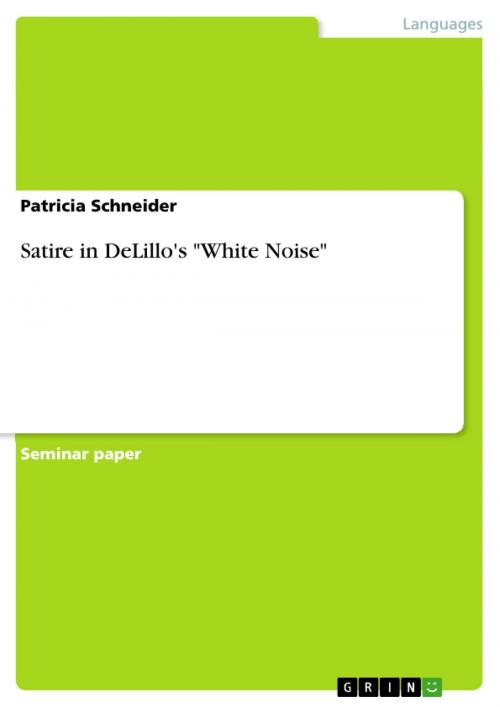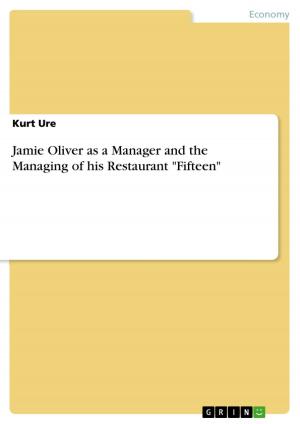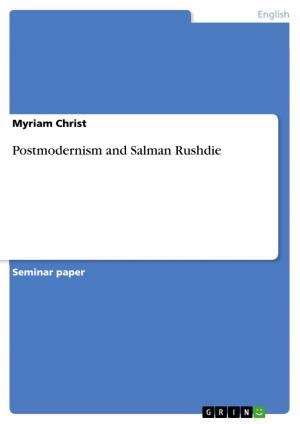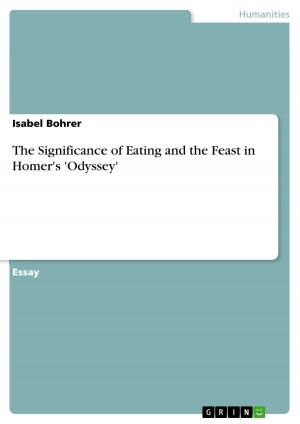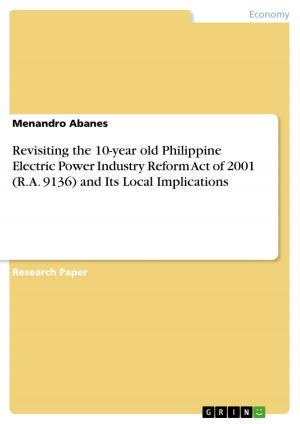| Author: | Patricia Schneider | ISBN: | 9783640727285 |
| Publisher: | GRIN Publishing | Publication: | October 19, 2010 |
| Imprint: | GRIN Publishing | Language: | English |
| Author: | Patricia Schneider |
| ISBN: | 9783640727285 |
| Publisher: | GRIN Publishing |
| Publication: | October 19, 2010 |
| Imprint: | GRIN Publishing |
| Language: | English |
Seminar paper from the year 2009 in the subject English - Literature, Works, grade: 2,0, University of Freiburg (Englisches Seminar), course: Proseminar I: Postmodern American Novel, language: English, abstract: Satire, sarcasm, irony - these are all related stylistic devices but there are crucial differences. Both satire and sarcasm generally ridicule human behaviour but only the satire implies the intent of improving the ridiculed behaviour. Irony on the other hand includes an incongruity or a connection that goes beyond the most obvious meaning and can therefore be used to underline the ridicule of the satire or the sarcasm. In White Noise DeLillo uses the satire to ridicule human behaviour in four different respects: to satirize the human behaviour related to consumerism, to satirize the human behaviour that is determined by the media, to satirize the behaviour of the novel's characters in their role in the family and to satirize Jack's academic life by depicting the lack of seriousness in his studies. However, DeLillo not only uses the satire to ridicule the behaviour of the novel's protagonist and his family but also shows the difficulties that arise when trying to improve the satirized behaviour.
Seminar paper from the year 2009 in the subject English - Literature, Works, grade: 2,0, University of Freiburg (Englisches Seminar), course: Proseminar I: Postmodern American Novel, language: English, abstract: Satire, sarcasm, irony - these are all related stylistic devices but there are crucial differences. Both satire and sarcasm generally ridicule human behaviour but only the satire implies the intent of improving the ridiculed behaviour. Irony on the other hand includes an incongruity or a connection that goes beyond the most obvious meaning and can therefore be used to underline the ridicule of the satire or the sarcasm. In White Noise DeLillo uses the satire to ridicule human behaviour in four different respects: to satirize the human behaviour related to consumerism, to satirize the human behaviour that is determined by the media, to satirize the behaviour of the novel's characters in their role in the family and to satirize Jack's academic life by depicting the lack of seriousness in his studies. However, DeLillo not only uses the satire to ridicule the behaviour of the novel's protagonist and his family but also shows the difficulties that arise when trying to improve the satirized behaviour.
